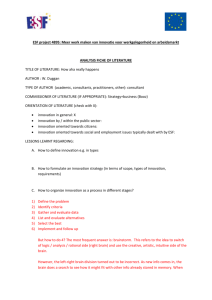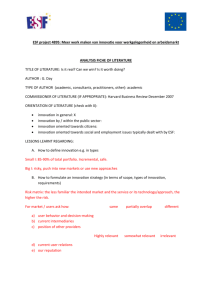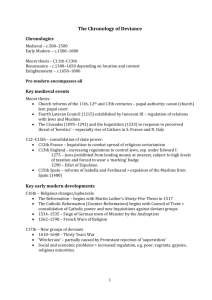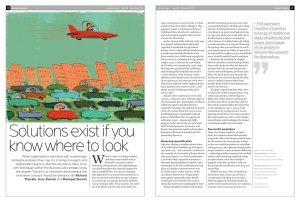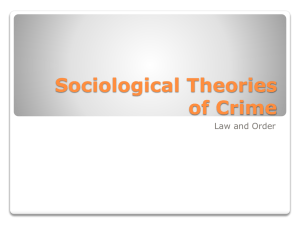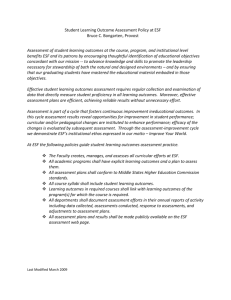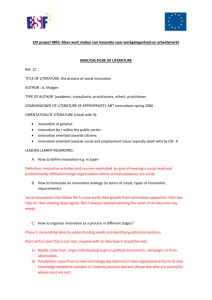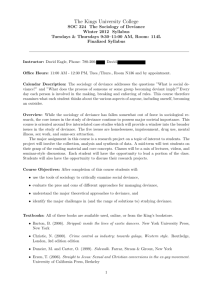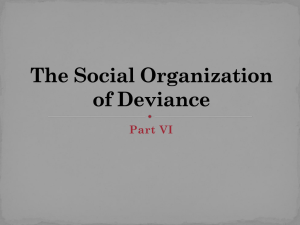ESF project 4895: Meer werk maken van innovatie voor
advertisement
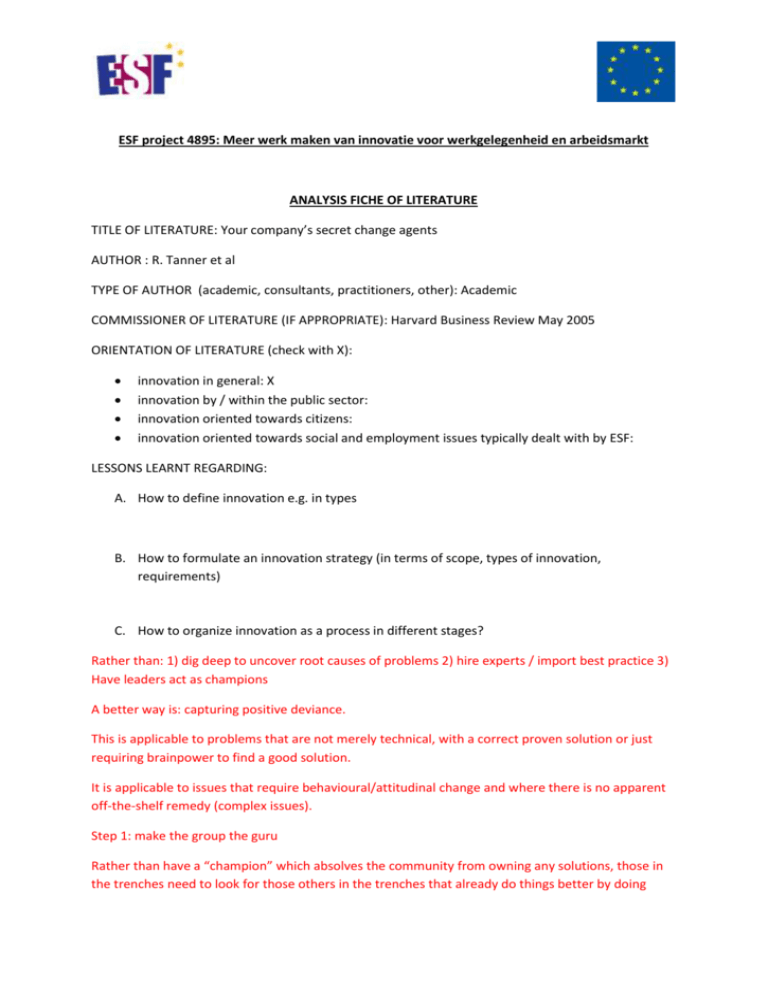
ESF project 4895: Meer werk maken van innovatie voor werkgelegenheid en arbeidsmarkt ANALYSIS FICHE OF LITERATURE TITLE OF LITERATURE: Your company’s secret change agents AUTHOR : R. Tanner et al TYPE OF AUTHOR (academic, consultants, practitioners, other): Academic COMMISSIONER OF LITERATURE (IF APPROPRIATE): Harvard Business Review May 2005 ORIENTATION OF LITERATURE (check with X): innovation in general: X innovation by / within the public sector: innovation oriented towards citizens: innovation oriented towards social and employment issues typically dealt with by ESF: LESSONS LEARNT REGARDING: A. How to define innovation e.g. in types B. How to formulate an innovation strategy (in terms of scope, types of innovation, requirements) C. How to organize innovation as a process in different stages? Rather than: 1) dig deep to uncover root causes of problems 2) hire experts / import best practice 3) Have leaders act as champions A better way is: capturing positive deviance. This is applicable to problems that are not merely technical, with a correct proven solution or just requiring brainpower to find a good solution. It is applicable to issues that require behavioural/attitudinal change and where there is no apparent off-the-shelf remedy (complex issues). Step 1: make the group the guru Rather than have a “champion” which absolves the community from owning any solutions, those in the trenches need to look for those others in the trenches that already do things better by doing different. These deviants are like the rest of the community, which makes it easier to transfer their practice. This goes against “best practice” thinking where an external authority decides what is best and should be adopted. This tends to ignore the specific circumstances that made a practice successful somewhere. This is also a warning: it does not suffice to have a champion look for positive deviants and then impose their practice. Implementers need to go and find out, see for themselves,take ownership. The leader only facilitates this. Step 2: reframe through facts First, take the conventional presentation of the problem. Second, find out if there are exceptions. Use hard data for this. Third, reframe to focus attention on the exceptions (how are they managing it…?) Rather than experts coming in with best practice, the community identifies pre-existing solutions. Rather than send the message: why are we not doing best practice (outside-in) already (are we stupid?), solutions from inside out are leveraged. Step 3: make it safe to learn Positive deviants may fear being “exposed” if doing so challenges the status of powerful others. Therefore, it may be good to use low-profile positive deviance workshops to explore “safe” problems first. After that, quietly move into harder topics. Step 4: make the problem concrete Portray the issue in a compelling way, no one can ignore. Reality must hit home! Even dramatise it. Step 5: leverage social proof Get those who are “deviating” to talk about it and about the benefits and start a movement where participants take small steps. Also, participants in this way act themselves into new ways of thinking, rather than think into new ways of acting. Step 6: confound the immune defense response Introduce already existing ideas (so they are context adapted) into the mainstream without excessive use of authority. D. How to define outputs of innovation e.g. in terms of idea, concept, prototype…? E. How to make decisions regarding progress of an innovation? F. What roles exist for different actors in the innovation process? What competences are required for these roles? G. How to organize interaction with external stakeholders (open innovation)? H. Specific tools that are explained (list briefly for each tool in what stage, by which role, why, how it is to be used). a) Tool 1:

